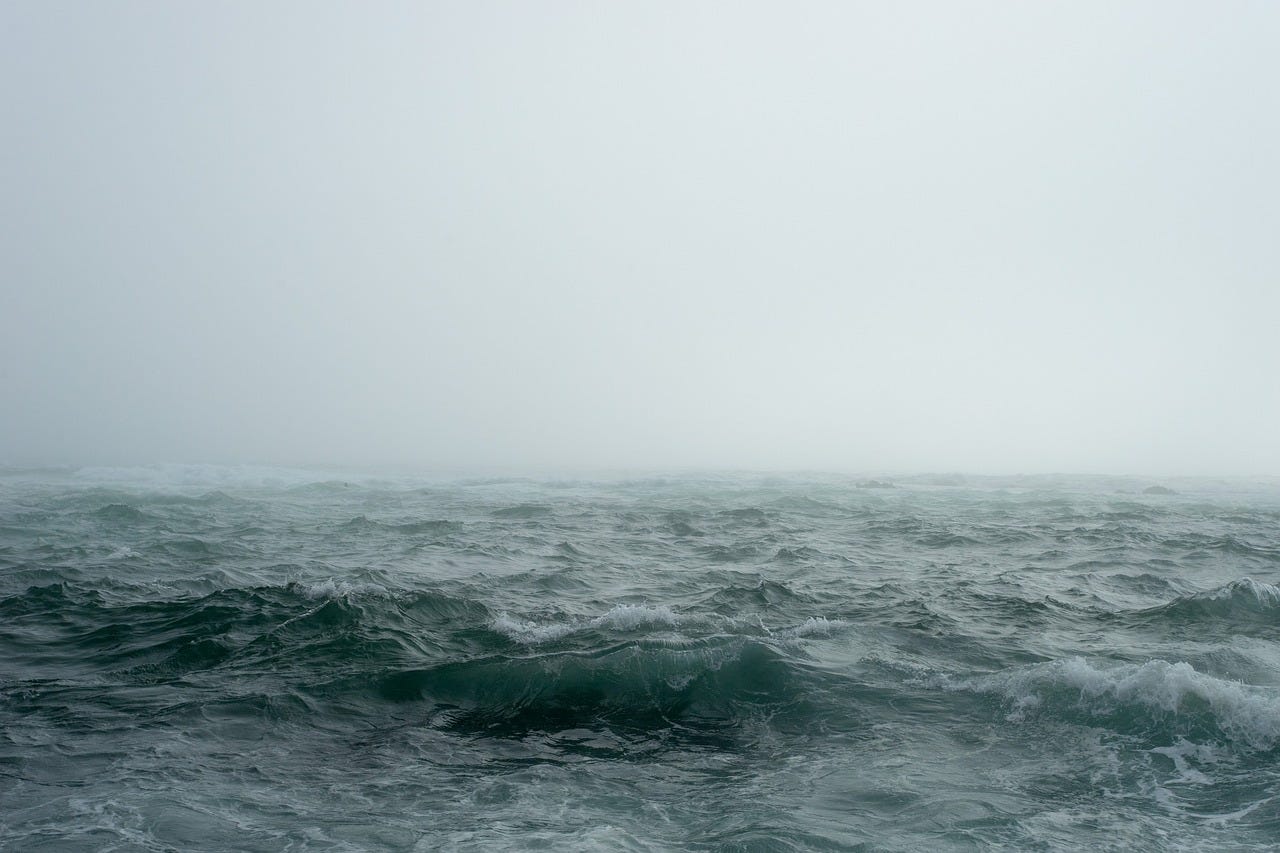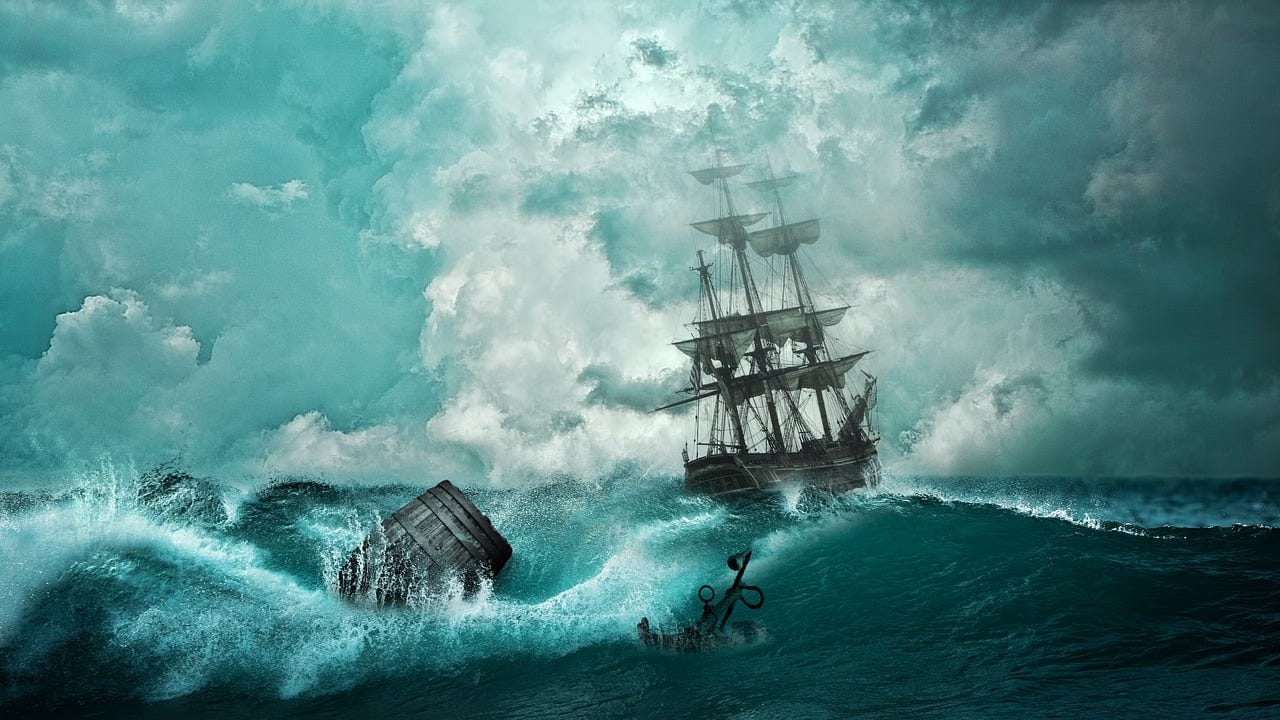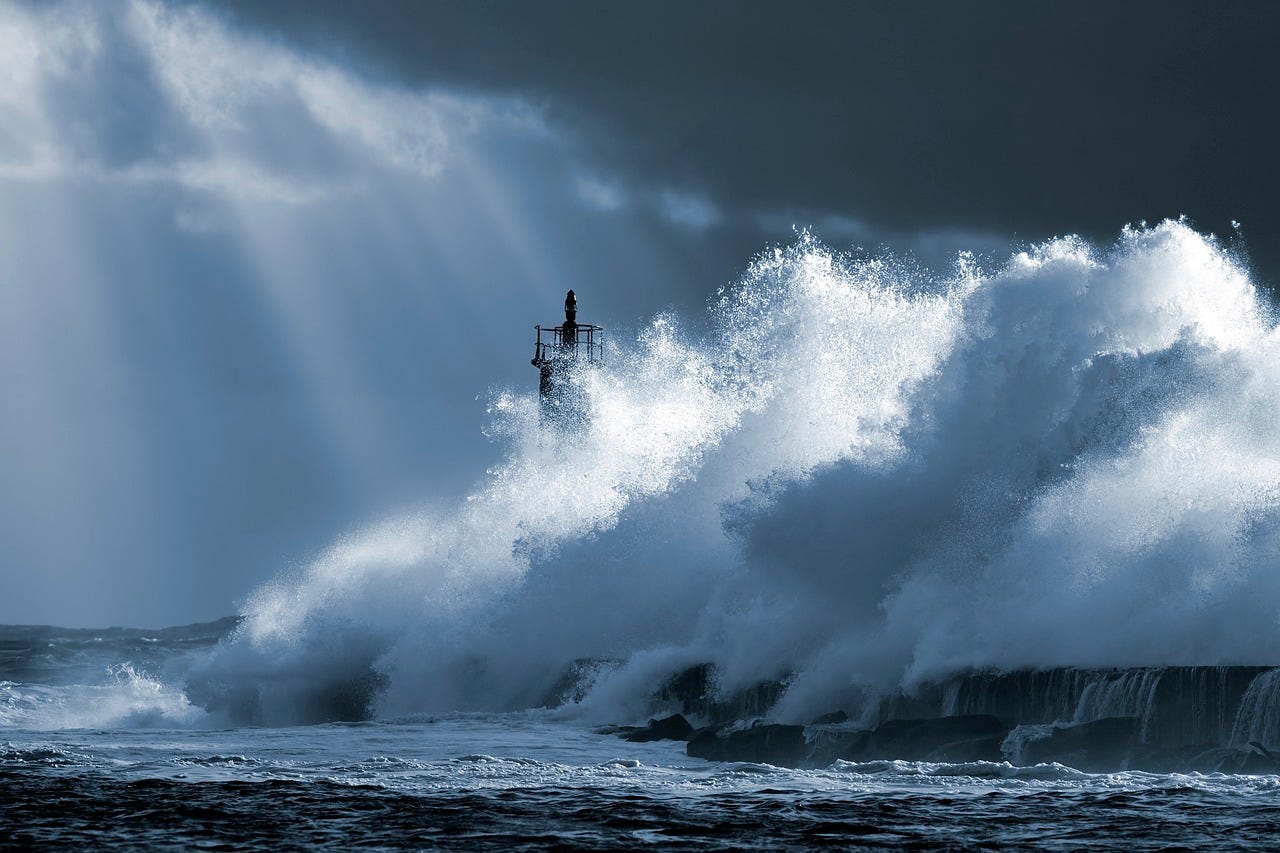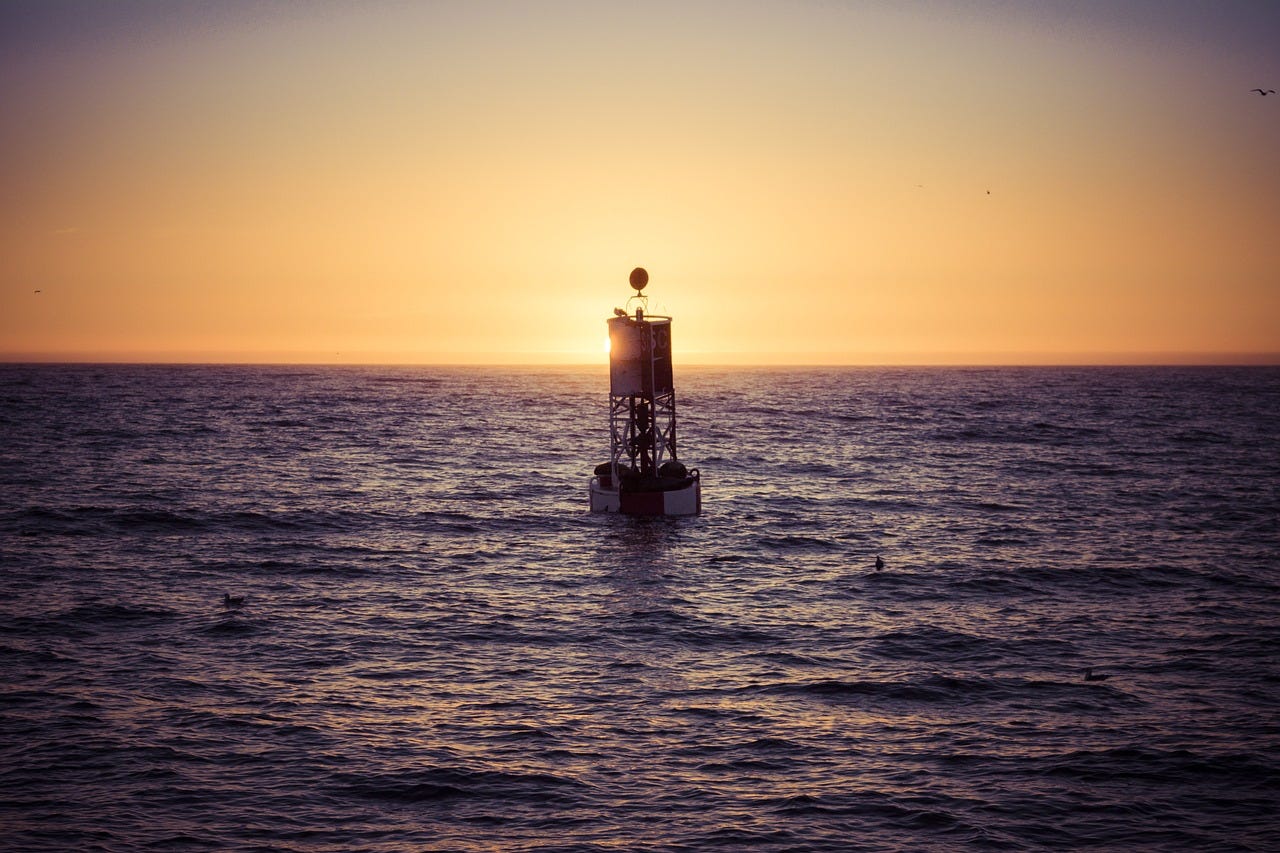SOL's first white paper is devoted to transmedium UFOs and UAPs
Ret. Rear Admiral Gallaudet authored a paper titled "Beneath the Surface We May Learn More about UAP by Looking in the Ocean"
The Sol Foundation, from its inception, declared its ambition to emerge as a prominent figure in scientific UFO research. It undertook the publication of a series of white papers addressing various aspects of the phenomenon, with the goal of advising the government. The inaugural opus, titled 'Under the Surface' and authored by Timothy Gallaudet, is a 29-page exploration into transmedium UAPs and UFOs. It provides an assessment of our current knowledge, areas of interest, and potential discoveries.
For Timothy Gallaudet, a new epoch in human history may be unfolding and deserves our attention.He mentioned some major events that have marked Disclosure. It all began in 2017 when the New York Times published a series of articles on a Department of Defense programme to collect and analyze data on UAP. Then in 2020, the Pentagon authenticated videos of aerial objects recorded by US Navy pilots. In 2021, these pilots provided eyewitness accounts and a video to the media.
The same year saw the creation of the AARO, which contributed to a report by the Office of the Director of National Intelligence (ODNI) in 2023. The report revealed 274 UAP sightings by DoD personnel between August 2022 and April 2023. Also in 2023, the National Security Subcommittee of the House Oversight Committee held a hearing where David Grush, a former intelligence officer with the National Reconnaissance Office, stated that the US government was holding debris recovered from UAP crash sites, and that the White House was therefore concealing material evidence, including biological remains, from Congress and the public.
These events led to the Schumer amendment. This bill, the result of meetings between members of the Senate and former DoD and intelligence officials, is straight to the point, using terms such as UAP (Unidentified Anomalous Phenomena), NHI (Non Human Intelligence) and TUO (Technology of Unknown Origin).
The government's willingness to tackle the subject of UAP also extends to NASA. The US space agency published a preliminary report of little interest in 2023, but nevertheless offered to collaborate with the AARO. In the wake of the government, scientific research programmes are being developed:
Harvard University's Galileo project is developing a network of ground-based observatories.
The Disappearance and Appearance Sources during a Century of Observations project is conducting a study of photographic plates from before the Sputnik era.
Other non-governmental organizations are now developing projects to promote research, public policy and education on UAP:
The Sol Foundation promotes research; the New Paradigm Institute has theological objectives, whereas Americans for Safe Aerospace, run by military pilots, is dedicated to aerospace safety and national security, with a focus on UAP.
Beneath the surface
Although the majority of research focuses on aerial phenomena, UAP are also observed at sea, either below the surface (UFOs) or in trans-medium displacement (i.e. between the atmosphere and the ocean).
The best-known example is the “Tic Tac” sighting by pilots from the Nimitz strike group in 2004. The most recent is that of the USS Omaha in 2019.
But the most impressive case is that of the Aguadilla airport in Puerto Rico in 2013. Over the course of three minutes, the object went from a speed of 40 mph to 120 mph, entered and exited the Atlantic Ocean without any significant deceleration, reached a maximum underwater speed of 95 mph and abruptly split in two before re-entering the water. No known man-made object is capable of this.
While reports do exist on UFOs, the literature is sparse and unsystematic. Here are a few books on the subject of marine UFOs:
UFOs over the Americas by Jim and Coral Lorenzen devotes a chapter to it.
Invisible residents, the first book devoted to UFOs, originally published in 1970.
UFOS and Waters, a detailed collection of cases involving UFOs and water.
Undersea UFO Base, accounts of UFO activity in California.
Timothy Gallaudet also cites Chris Styles' work on a 1960 UFO encounter in Nova Scotia, JG Tedesco and DL Nardo's recent research off Long Island, Debbie Ziglemeyer's study of UFOs in general near water, and Richard Dolan's forthcoming book, a comprehensive collection of cases from 1711 to the present day.
In all the sources, submarine and transmedial UAP are as diverse as aerial ones. Common shapes include orbs, triangles, cigars and discs. Large luminous craft are often seen. Appearances in formation or in groups are reported, as are solitary ones. They sometimes appear to defy the laws of physics.
Timothy Gallaudet illustrated the diversity and strangeness of the phenomenon with two examples.
Firstly, Royal Canadian Navy divers, as reported by Styles, reported seeing two discs resting on the seabed, and filming the occupants repairing one of the devices. The second case revealed by the Lorenzen couple relates an observation made by the crew of an American civilian ship in the Strait of Hormuz. They observed an illuminated area of around 400 meters long, pulsating and rotating. Bolder, the whistleblower, reported a bizarre and extremely impressive effect, with the ship appearing to occupy the center of an enormous reel whose "spokes" were made up of phosphorescent luminance rotating rapidly around the ship like a hub. This phenomenon is now attributed to bioluminescent organisms. Admiral Gallaudet emphasized the importance of never neglecting a rational explanation for phenomena.
The unknown ocean
The ocean occupies a large part of the planet, yet very little is known about it.
Timothy Gallaudet sees historical reasons for this. Despite 500 years of reconnaissance and mapping, it was not until the 19th century that the first multi-disciplinary research expedition was launched. For 4 years, the HMS Challenger discovered and mapped vast areas. The 20th century saw the development of the scientific study of the sea. The Second World War was a tremendous boost, as the government invested in research. But it was not until 2009 that the government again developed a programme with a dedicated ship.
Finally, in 2020, the government set up a national strategic programme, The National Strategy for Mapping, Exploring, and Characterizing the U.S. Exclusive Economic Zone. This programme will prove extremely fruitful from a scientific point of view and in various disciplines: discovery of unexplored seamounts, archaeological relics and marine life. In the field of marine life in particular, between the discovery of extremophilic species and the incredible diversity of life forms, we are led to believe that the ocean is a place conducive to abnormal phenomena.
Under these conditions, research into aerial UAP would only scratch the surface of the reality of the phenomenon. While the lack of political will and the under-investment are primarily responsible for the lack of knowledge on the ocean, there are two other reasons.
Firstly, the data collected by the army is classified and not easily accessible to scientists.
Secondly, the majority of research consists in refining what we already know about dynamic, chemical, geological and acoustic processes. As a result, some events remain outside the scope of sensors because of their calibration. Other events can be suppressed because they are treated as undesirable 'noise' in accordance with the experimental protocols.
This is what happened on board the USS Maury in 1946, reports Richard Dolan. The sonar detected what the crew classified as a "seamount". But the object accelerated and disappeared. The standard protocol was to suppress "noisy hydrographic data".
When scientists gather evidence, it must be re-examined to refute or confirm the UAP hypothesis. In 2022, NOAA researchers discovered a quasi-linear formation of holes, each with its own small pile of sediment, at a depth of 2,540 metres. As the vehicle that made the discovery was unable to scan the hole, the principal investigator concluded that these holes indicated "gaps" in our knowledge of the ocean depths.
Timothy Gallaudet lamented the huge gaps in our knowledge of the oceans, quoting Dr Walter Munk:
The first 100 years of oceanography could well be called a century of under-sampling
It appears UFO sightings are just the tip of the iceberg.
Rethinking maritime safety
Geophysical undersampling of the oceans is a problem for safety. A famous axiom states that an elevated position gives a strategic advantage over the adversary.
An equivalent exists in the navy. Some environments are more favourable than others, in particular because the propagation of sound and light is better there. The acoustic and optical sensors used are highly sensitive to the bathymetric and sedimentary characteristics of the seabed, as well as to dynamic changes in the three-dimensional distribution of water properties.
Timothy Gallaudet warned of the consequences of not knowing enough about the ocean. In 2005, the USS San Francisco collided with an unexplored seamount. Some 98 people were injured.
The USS Connecticut will make the same mistake in 2021. Only 1/10th of seamounts have been mapped.
After listing all the current global conflicts in which the US Navy is involved, Admiral Gallaudet went on to talk about 'softer' threats such as China and its role in environmental degradation, pollution and climate change, environmental degradation, marine pollution, illegal fishing, the destruction of coral reefs and greenhouse gas emissions. Finally, he discussed the great invisible threat, the network of undersea cables. 95% of the world's communications pass through these cables, which land on unprotected coasts. Russia is investigating cables in the Atlantic, and China has already sabotaged certain links to Taiwan.
UAP add to all these security threats. The AARO and ODNI report on air traffic shows that hundreds of UAP intrusions have been documented. This demonstrates the army's major shortcomings in this area. Timothy Gallaudet criticised the "apathy" in the face of the situation and an attempt to play down the phenomenon by those who claim that "the majority of cases will be reduced to ordinary phenomena". He pointed out that the report, by stating that UAP do not threaten the safety of the flights that observe them, contradicts certain experts, notably Ryan Graves’ Americans for Safe Aerospace, which depicts this issue as a priority.
Timothy Gallaudet sees it as a manoeuvre on the part of the government, which does not wish to reveal everything it knows. However, when it comes to knowledge about UAP, the situation is much worse in the maritime sector. The vastness of the ocean already makes it difficult to maintain an acceptable threat threshold. But if we add the UAP threat, it becomes very problematic. For example, the Aguadilla transmedium UAP reached an underwater speed of 90 mph. No American military craft can do that. This should cause the authorities to become alarmed and demand answers.
The DoD does not react to intrusions by unidentified objects with inexplicable characteristics in aquatic space. Yet the rigour of the "Water Space Management (WSM) and Mutual Interference Prevention (PMI)" protocols is well known. These are designed to prevent potentially lethal interactions between submarines and other underwater craft.
Admiral Gallaudet concluded that in the maritime domain too, the government does not reveal what it knows. He mentioned "someone" (most probably former Deputy Under-Secretary of Defence) who recently compared the government's apparent apathy to the attack on Pearl Harbour and 9/11. Both of which could have prevented thousands of civilian casualties. This comparison is perhaps justified by the cases where the UAP interfere with the DoD's nuclear deterrent capability. As far as the Navy is concerned, only one case was reported to Timothy Gallaudet. But "m, it is possible that the sea-based arm of the US nuclear triad is experiencing similar levels of interference".
Timothy Gallaudet concluded by quoting "someone" again: "When has ignorance ever been a good national security strategy?"
The new scientific revolution
While UAP have important security implications, they are nothing compared to the scientific implications. Credible observers and calibrated instruments have objectified observations that defy imagination. The Schumer amendment keeps referring to technologies of unknown origin. The discoveries resulting from an in-depth scientific study of UAP would constitute a revolutionary technological and scientific leap forward.
The subject of non-human intelligence (NHI), for example, is both shocking and promising, for these objects have designers whose intentions we do not know. If this is demonstrated, what an upheaval! For astronomy and astrobiology, it would mean a change of frame of reference. On the social sciences front, it would open up whole new areas of research into the interactions between humans and others.
As far as ocean sciences are concerned, the effect is likely to be nil in the short term. The stigma attached to UFOs and UAP will likely dissuade scientists from looking into the matter for some time to come. Public interest could lead to the emergence of more pioneers like the Galileo project’s Avi Loeb. And as more and more data is collected and discoveries are made, more and more scientists could become interested in the phenomenon. In the future, the government could set up more ambitious projects than the AARO and its attempt at categorisation. The explorations are expected to "identify new marine species, geological features, and oceanic processes."
Timothy Gallaudet is betting on a virtuous process in which research into the UAP, scientific interest in the subject and discoveries of economic and collective benefit would reinforce one another. More and more researchers should therefore consider UAP research worthy of interest over time. According to one study, scientists' interest in the subject is already picking up. Moreover, Admiral Gallaudet anticipates the same evolution in UAP as in aeronautics in the 20th century, where a synergy between political will, regulations and good practice enabled the initial reluctance shown by pilots to be overcome.

A call to action
.Transmitting UAP and UFOs should therefore become priorities in national research on the oceans. Such large-scale action, bringing together governments, universities, the international community and non-governmental organisations, should be beneficial to safety and research.
Timothy Gallaudet pointed out that the government can request by decree that existing data be re-examined. This classified and unclassified information is mainly held by NOAA, NASA, the Office of Naval Intelligence and the Naval Oceanographic Office.
What is needed is "a targeted survey of their archives and data repositories could lead to greater understanding of the physical characteristics and risks of these phenomena”.
This study could be conducted by the Naval Studies Board of the National Academies of Sciences under the aegis of the AARO. It would be interesting to include in the study all the other institutions with data, such as ocean research institutions, whether private, public or philanthropic.
The government could include anomalous phenomena as a research priority in all areas of the 2026 budget. It should direct the Ocean Policy Committee to add UAP and UFOs to the implementation plan for the national strategy for mapping, exploring and characterising the oceans of the US exclusive economic zone. This plan has been followed for two years by NOAA, the US Navy, the US Geological Survey, the US Army Corps of Engineers and several other agencies to explore and characterise areas of the ocean and Great Lakes. It targets "offshore energy development and aquaculture, critical minerals, biopharmaceutical resources, critical fish habitat, and areas in which natural hazards pose a risk to public safety.".
Timothy Gallaudet also encouraged the Senate and House to continue their efforts and include the Schumer amendment and the previous programme in the Defence Authorisation Act 2025. He hopes that the Ocean Caucus in both chambers will work with supporters of the Schumer Amendment to support controlled disclosure. The White House and Capitol Hill "should support partnerships between the government and the many ocean stakeholders in academia, philanthropy, and the private sector for the purpose of maritime UAP research.”
Aerial UAP have been the subject of research for decades. With the recent support of Congress and new organisations, America is well placed to understand what is happening with aerial UAP. This is not the case with transmitting UFOs. Yet the phenomenon can only be understood by studying it in its entirety.
Translated by Kate Sellier and Guillaume Fournier Airaud
This work is licensed under CC BY-NC-ND 4.0









